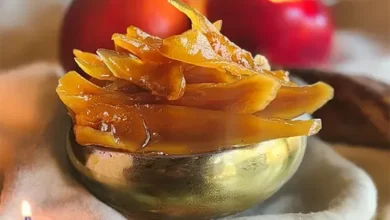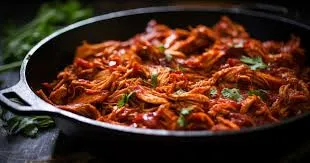What Is Põde? – Etymology and Meaning!

Põde is one of the oldest words that capture cultural philosophy of how people should lead their healthy lives. In accordance it is define as a holistic set of practices that is aim at the improvement of the body, the regulation of thoughts and adaptation with nature. The etymology of the word “Põde” was derive from the ancient language and culture where it was use to describe things that were healthy, wellness/power. It is a whole-body, mind, emotion, spirit system of healing based on such metaphysical systems of endowment, ancient healing wisdoms as the Ayurveda system of India, TCM of China, and these Pre-and Post-Columbian New World indigenous people.
History – The Roots of Põde
It has its origins with ancestors to ancient ones which are sensitive to preservation of natural resources and maintaining harmony within one. As a wellness belief system has been develope over many generations and culture and is informe by traditional medicines all over the world. It is ingraine in the philosophy of mind-body-spirit connection in relation to the body, the psychological aspects of health and the physical surroundings.
Ancient Beginnings and Historical Timeline
This kind of practice is best illustrate in ancient books covering Indian, Chinese and other tribal customs across the globe. In the system of Ayurveda the concept of doshas – the biological energies resonates with the philosophical system. In the same way as it focuses on harmony inside the body and outside it in relation to the universe, TCM also talks about the yin-yang concept. These practices were gradually developed and over the years thrown through generations and became what is called Põde today.
Evolution Across Cultures
When it was adopted, it continued to pick up ideas from other cultures and separate identities, each incorporating their ideas into the philosophy. In the East it combined yoga, tai chi and meditation exercises with Põde whilst in the West it was adopting the ideas of mindfulness, emotional intelligence and eco-consciousness. These interactions helped to strengthen its trading relations, and thus diversified the wellness system.
Controversies and Debates
Põde, on the other hand, has accumulated a great reputation for its family-comprehensive way of thinking about health and healing but that is not without scandal. Some have criticized it for the possibility of using traditions which are more outdated than complementary to the scientific research of today. Some people even doubt that some of those practices, such as for instance use of herbs, or energy healing, are helpful, even though there is no scientific research proving the opposite. However, despite these controversies, It is gradually enjoying an increased level of acceptance as people look for other healthy lifestyles.
Principles of Põde – Holistic Wellness!
Basically, It is based on the concept of balance and the relationship between an individual and his or her surroundings. It is more inclined towards the development of health, the cultivation of the mind and the development of the overall spirit. The principles of Põde are divided into three main categories: caring for the body, achieving mental equilibrium and integrating with the surrounding.
Nurturing the Body
It is engage in enhancing the health status of people by promoting healthy eating habits, regular exercise, and personal care. This also involves following what is consumed, doing activities that enhance good health and body strength and it involves the treatment of the body.
Diet and Nutrition
Food consumption is an important factor in Põde. The main focus is on eating natural-unprocessed foods that would be appropriate for the individual’s body type, called dosha in Ayurveda. It advises the use of locally available produce especially during the appropriate season and palatable inter-organ transit meals and adequate nutrition.
Physical Activity
However, both endurance and physical movement are well-incorporate into this. Some of the popular forms of exercises that are prefer include aerobics, yoga, tai chi, and qigong among others due to the special characteristics that include increased physical power, pliability, and focus. These kinds of exercises assist people to be in touch with their physical selves in addition to relaxing and awareness.
Balancing the Mind
Now, mindfulness and meditation are an integral part of Põde to facilitate awareness and to lose excessive mental load. Meditation on the other hand teaches people how to clear their minds, build up their emotional strength as well as attain a better perspective of life.
Mindfulness and Meditation
Põde also supports the health related practices involving emotional regulation or the way individuals channel their feelings. Counseling, journaling, creative arts and other such activities can be helpful in managing feelings as well as in developing coping mechanisms.
Emotional Wellness
The latter pays much attention to the unity of man with the environment: Põde = living in cooperation with nature. This is done in the form of awareness of the environment, engaging in activities that help in reducing stress such as going for an early morning jogging in the park, and encouraging people to make environmentally friendly practices.
Harmonizing with the Environment
However, in the recent decades, it is found that it is in harmony with the current generation’s trend especially in the area of health and wellness. Its general approach towards well-being where it encompasses the mind, body and the environment it is surrounde by; closely relates to the present day want of people for a more healthy and an eco-friendly way of living. As much as it flows from very ancient culture, It is modernize in several aspects today.
Põde in Modern Usage
Põde has become more important as a concept in the wellness orientation that is a culture shift towards health and positive human well-being. While practicing it today, it is practice along with trendy activities of today such as yoga, meditation applications or accounts, plant base diets or an environmentally friendly life. They align themselves with the trend towards attaining mental health, stress and physical fitness.
Integration with Modern Wellness Trends
This aspect of its modern uses certainly is that it is highly individualize in address – and thus, highly employing it. Living in the age of mass personalization, It empowers people and allows them to choose the kind of well-being regime they wish. From individualized diets and exercise programs to meditation and stress management programs that fit one’s state of mind, It caters for modern day health conscious consumers.
Personalization and Accessibility
One of the primary sources of interest in the use of Põde in the present day is the attributable element of individuality associate with its usage. During the time when clients seek personalized approaches to their health and diverse lifestyles, It allows such freedom to effectively create delicious and healthy recipes. From custom meal plans and programs that can fit an individual’s schedule for workouts to stress and anxiety management practices, It caters to the modern and ever-changing lives of people who strive for better well-being.
Mindfulness and Mental Health
In the U. S. where stress and concerns about mental health has become the order of the day, Põde has been encouraging mindfulness and meditation. Moreover, the philosophy of this approach aims to help people control their stress by learning special modes of thinking that helps the mind and emotions to be in harmony. For this reason, it is also used in corporate wellbeing schemes, mental health interventions and self-improvement plans.
Also Read: Brouwer Fruit – Kersen Verkoop
A Step-By-Step Guide – Nuances of Põde!
To embark on a Põde-based wellness journey, it is essential to follow a step-by-step approach:
- Learn the Basics:
It will be helpful to first consider the basic principles of it namely body, mind, and environment.
- Consult with a Practitioner:
Read this article then consult a professional practitioner of Põde to offer you advice on your general health.
- Start with Diet and Nutrition:
Choose Põde-based menus that include whole fresh and local food items that are in season.
- Explore Physical Activities:
Practical: perform yoga, tai chi, and other movements that relate to its principles.
- Practice Mindfulness and Meditation:
Develop a daily state of mindful and meditative approach to boost challenged mental and emotional states.
- Connect with Nature:
Get fit, enjoy outdoor activities and free play in order to develop the understanding of the roles of the natural world.
Benefits of Põde
It offers numerous benefits for physical, mental, and emotional well-being:
- Stress Reduction:
Currently, there is evidence that suggests that mindfulness and meditation practices help in relaxation and reduction of stress.
- Improved Focus and Mental Clarity:
Practicing mindfulness brings improvement on mental health and focus.
- Enhanced Emotional Well-being:
Cognitive engaging activities such as journaling, creative arts and practices that enhance a client’s pattern of emotional wellness improve stability.
- Physical Health Benefits:
Põde-based diets and physical activities have the effect of enhancing the health and flexibility of the region’s cardiovascular structure and vitality.
- Connection with Nature:
Many scholars have come up with evidence that proves that being in nature is good for mental health, reduces stress and even improves mood.
- Improved Sleep Quality:
Neurological exercises such as relaxation and breathing exercises help in improving sleeping habits.
Is Põde Right for You? – Transformative Potential Analysis!
Põde is ideal for one who wants to work on his or her health by involving the whole self and the surrounding environment. It has the possibility to change people’s lives and give them hope to lessen their pressure, enhance their wellbeing, and get a significant balance in their lives. It is important to come to it without bias and with an open mind, expecting that the experience will be a learning one which will produce different outcomes with different people.
Conclusion
Its aim is to help East and West find the way to a healthy body and soul embracing traditions of thousands of years together with the experience of the latest years. In a way, it is beneficial in that it provides a holistic way of caring for the body, the mind, and the physical environment to enable one to lead a productive, healthy and happy life.




